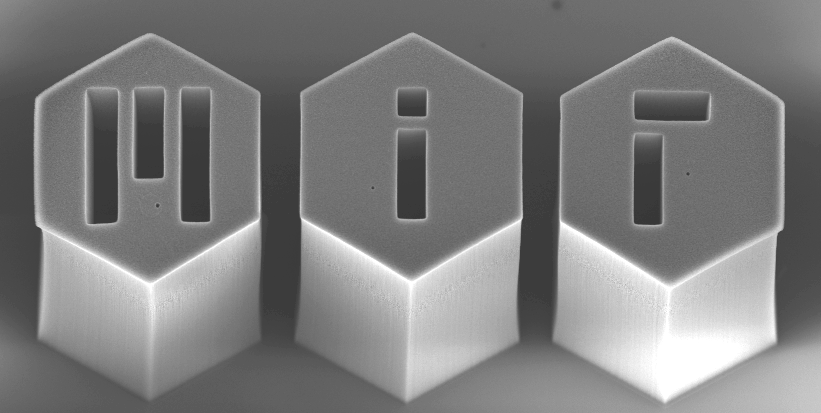S. Tawfick, K.P. O’Brien, A.J. Hart.Small 5(21):2467-2473, 2009. [http://dx.doi.org/10.1002/smll.200900741]
[PDF]
Applications of carbon nanotubes (CNTs) in flexible and complementary metal-oxide-semiconductor (CMOS)-based electronic and energy devices are impeded due to typically low CNT areal densities, growth temperatures that are incompatible with device substrates, and challenges in large-area alignment and interconnection. A scalable method for continuous fabrication and transfer printing of dense horizontally aligned CNT (HA-CNT) ribbon interconnects is presented. The process combines vertically aligned CNT (VA-CNT) growth by thermal chemical vapor deposition, a novel mechanical rolling process to transform the VA-CNTs to HA-CNTs, and adhesion-controlled transfer printing without needing a carrier film. The rolling force determines the HA-CNT packing fraction and the HA-CNTs are processed by conventional lithography. An electrical resistivity of 2?m??·?cm is measured for ribbons having 800-nm thickness, while the resistivity of copper is 100 times lower, a value that exceeds most CNT assemblies made to date, and significant improvements can be made in CNT structural quality. This rolling and printing process could be scaled to full wafer areas and more complex architectures such as continuous CNT sheets and multidirectional patterns could be achieved by straightforward design of the CNT growth process and/or multiple rolling and printing sequences.
Disclaimer: The PDF document on this webpage is provided for educational and personal purposes alone and is subject to copyrights of the publisher.

